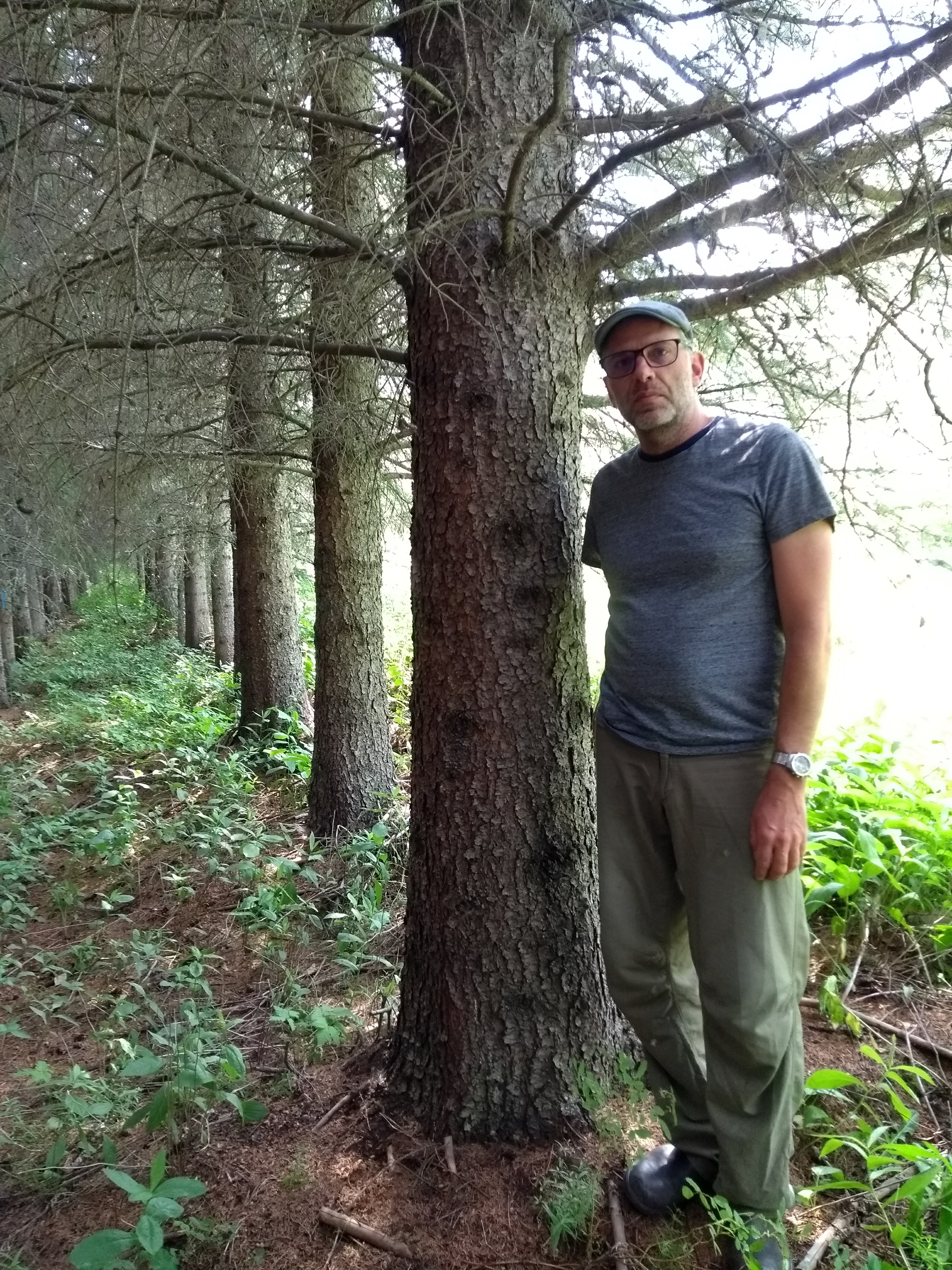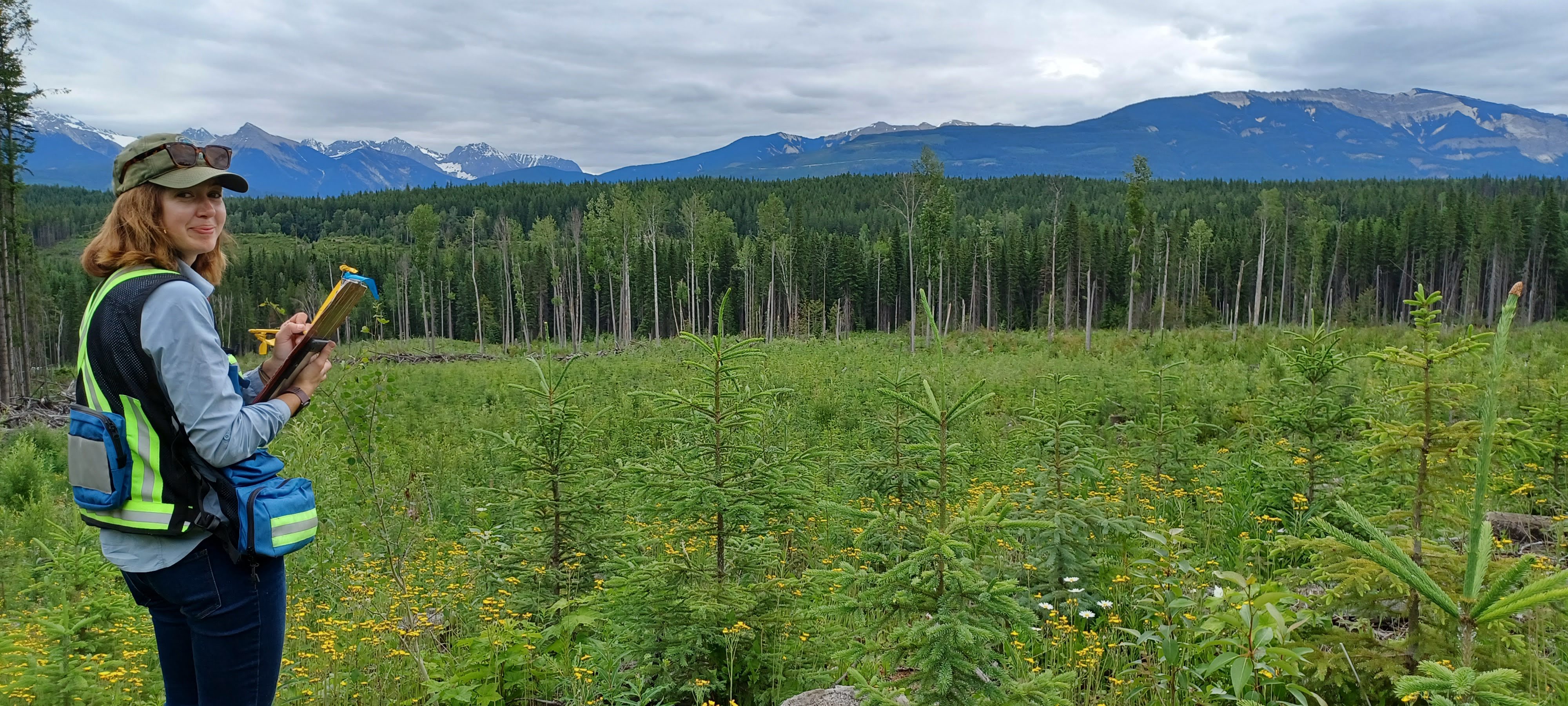Interior spruce tree breeding program
Interior spruce is the oldest tree improvement program in the British Columbia Interior. It began in the early 1960s with genecology research and provenance testing, evolving into a large-scale tree breeding program in 1967. The major traits selected for improvement include growth (tree height, diameter, volume) and terminal weevil resistance.
The program has progressed to the point where more than two billion improved interior spruce seedlings have been planted in B.C. since 1980. In 2015, 94 percent of the 71.5 million spruce seedlings planted in B.C. came from improved first-generation seed orchards. Compared to average wild-stand seedlings, these improved seedlings are predicted to result in gains of over 20 percent in tree volume at rotation age.
Current research activities focus on:
- Genecology testing in contrasting environments to facilitate climate-based seed transfer
- Development of terminal weevil resistant genotypes based on nursery screening with laboratory reared weevil populations
- Developing improved phenotyping techniques and genetic markers for genomic selection to identify weevil resistant genotypes
References
- Birol, I., Raymond, A., Jackman, S.D., Pleasance, S., Coope, R., Taylor, G.A., Yuen, M.M., Keeling, C.I., Brand, D., Vandervalk, B.P., Kirk, H., Pandoh, P., Moore, R.A., Zhao, Y., Mungall, A.J., Jaquish, B., Yanchuk, A., Ritland, C., Boyle, B., Bousquet, J., Ritland, K., Mackay, J., Bohlmann, J. and Jones, S.J. 2013. Assembling the 20 Gb white spruce (Picea glauca) genome from whole-genome shotgun sequencing data. Bioinformatics 29, 1492-1497.
- Warren, R., Keeling, C, Yuen, M., Raymond, A., Taylor, G., Vandervalk, B., Mohamadi, H., Paulino, D., Chiu, R., Jackman, S., Robertson, G., Yang, C., Hoffmann, M., Weigel, D., Ritland, C., Isabel, N., Jaquish, B., Yanchuk, A., Bousquet, J., Jones, S., Nelson, D., Mackay, J., Birol, I. and Bohlmann, J. 2015. Improved white spruce (Picea glauca) genome assemblies and annotation of large gene families of conifer terpenoid and phenolic defense metabolism. The Plant Journal. Vol 83 (2): pp 189-212.
- Yousry El-Kassaby, Blaise Ratcliffe, Omnia Gamal El-Dien, Jaroslav Klapste, Ilga Porth, Charles Chen, and Barry Jaquish. 2015. A comparison of genomic selection models across time in Interior Spruce (Picea engelmannii x glauca) using unordered SNP imputation methods. Heredity. Accepted.
- O’Neill, G.A., M. Stoehr and B. Jaquish. 2014. Quantifying safe seed transfer distance and impacts of tree breeding on adaptation. Forest Ecology and Management. 328 (2014) 122–130.
- Amanda De La Torre, Tongli Wang, Barry Jaquish and Sally N. Aitken. 2013. Adaptation and exogenous selection in a Picea glauca x P. engelmannii hybrid zone: Implications for forest management under climate change. New Phytologist.
- Ledig, FT, GE Rehfeldt and BC Jaquish. 2012. Projections of suitable habitat under climate change scenarios: Implications for trans-boundary assisted colonization. American J. Bot. 99(7): 1–14. 2012.
- Porth I, White R, Jaquish B, Alfaro R, Ritland C, Ritland K. 2012. Genetical Genomics Identifies the Genetic Architecture for Growth and Weevil Resistance in Spruce. PLoS ONE 7(9): e44397.
- Xiao-Xin Wei, Jean Beaulieu, Damase P. Khasa, Jesús Vargas-Hernández, Javier López-Upton, Barry Jaquish, Jean Bousquet. 2011. Range-wide chloroplast and mitochondrial DNA imprints reveal multiple lineages and complex biogeographic history for Douglas-fir. Tree Genetics and Genomes.
- Nicholas Ukrainetz, G. A. O’Neill and B. Jaquish. 2011. Comparison of fixed and focal point seed transfer systems for reforestation and assisted migration: a case study for interior spruce in British Columbia. Can. J. For. Res. 41(7) 1452-1464.
- Verne S., B. Jaquish, R. White, C. Ritland and K. Ritland. 2011. Global transcriptome analysis of constitutive resistance to the white pine weevil in spruce. Genome Biology and Evolution.

Forty-five-year-old first-cycle interior spruce progeny selection at the Prince George Tree Improvement Station.

Technician recording data at a six-year0old second-cycle interior spruce Nelson low progeny trial near Donald, B.C.
